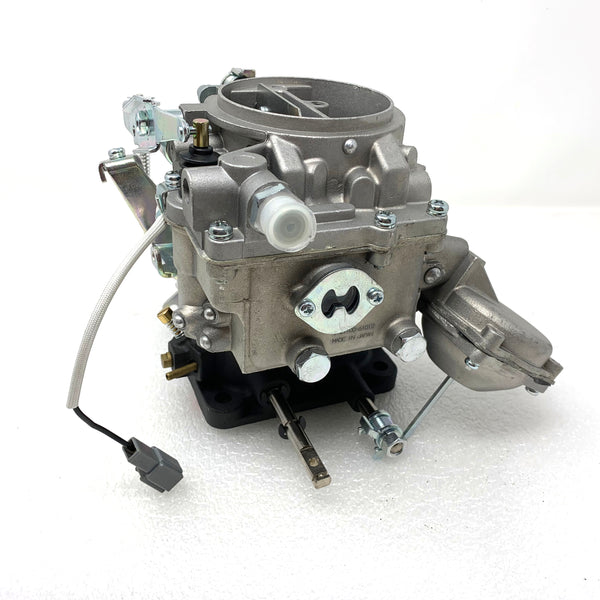Good day, Ih8mud!
You guys are the best you know!
My wife and I recently bought a 1975 FJ40. It had been in a warehouse since 2009 when it was shipped to Indiana from California by the previous owner. It only had five miles put on it from when it was sold in 2009.

The previous owner put a knockoff Holley 2 barrel carburetor from Amazon on it to get it running for an easier sale. It ran great for having some very old plugs, wires and this crap carburetor. It had a high idle, I thought I could dial that in, ha! Thought?!?! I now have it where it will die at random times whether I have the idle screws out running rich or turned in with a lean lower idle. Idle set screw on the linkage is out where I think it should be, I can get it to affect the idle then back off to where it doesn’t.

So, I’d love to get this to a point that we could take short local trips without fear of being stranded. I have two other carburetors that came in a box with it, I think they are Toyota originals. I guess they both have stripped screw holes on the fuel bowls. Any suggestions on a potential carburetor rebuild mechanic? I’m not sure I’m ready to tackle it. Is the Webber carb the way to go? Or just wait and bite the bullet and go with the Holley Sniper EFI?
Awesome pic stolen from @timmyisinthewell

You guys are the best you know!
My wife and I recently bought a 1975 FJ40. It had been in a warehouse since 2009 when it was shipped to Indiana from California by the previous owner. It only had five miles put on it from when it was sold in 2009.
The previous owner put a knockoff Holley 2 barrel carburetor from Amazon on it to get it running for an easier sale. It ran great for having some very old plugs, wires and this crap carburetor. It had a high idle, I thought I could dial that in, ha! Thought?!?! I now have it where it will die at random times whether I have the idle screws out running rich or turned in with a lean lower idle. Idle set screw on the linkage is out where I think it should be, I can get it to affect the idle then back off to where it doesn’t.
So, I’d love to get this to a point that we could take short local trips without fear of being stranded. I have two other carburetors that came in a box with it, I think they are Toyota originals. I guess they both have stripped screw holes on the fuel bowls. Any suggestions on a potential carburetor rebuild mechanic? I’m not sure I’m ready to tackle it. Is the Webber carb the way to go? Or just wait and bite the bullet and go with the Holley Sniper EFI?
Awesome pic stolen from @timmyisinthewell
Last edited:


